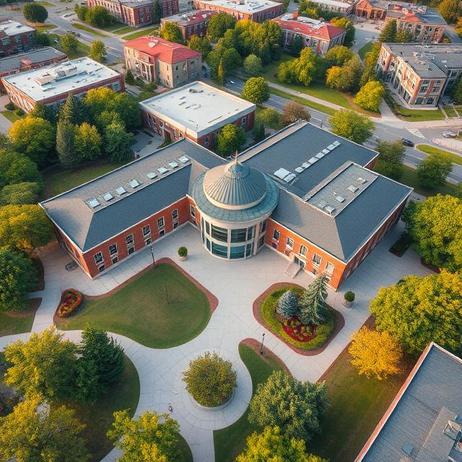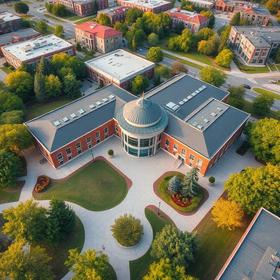Community College vs University: What’s the Difference?
When students and families contemplate postsecondary education in 2025, one of the recurring questions is whether to begin at a community college or enroll directly in a university. On the surface, both pathways lead to degrees and career opportunities—but beneath that, there are meaningful distinctions in cost, structure, student population, and outcomes. This article updates common comparisons with the latest data, policies, and real-world examples to help prospective students, parents, and educators make better-informed decisions.
What Is a Community College?
Definition & mission. Community colleges (often known as junior or two-year colleges) offer associate degrees, certificates, workforce training, remedial courses, and often serve as gateways for transfer to four-year institutions. Their mission is dual: provide accessible postsecondary education and respond to local workforce needs (e.g. health, trades, IT).
Typical programs. Students often complete general education (math, English, natural sciences) or specialized vocational courses. Many also enroll part-time or balance studies with full-time jobs or family responsibilities.
Student demographics & scale (2025).
Community college students account for approximately 39 % of all U.S. undergraduates as of 2025.
In Spring 2025, community colleges saw one of the largest enrollment upticks among postsecondary institutions (+5.4 %) — part of a broader +3.2 % increase in postsecondary enrollment overall.
Nearly half of all Hispanic undergraduates now begin at community colleges.
Many community college students are older, working, or first-generation. Their schedules tend to be more flexible, and many enroll part-time.
What Is a University?
Definition & mission. Universities are institutions (often public or private) offering bachelor’s, master’s, and doctoral degrees. They typically maintain stronger research programs, broader curricula, and deeper specialization in academic fields (e.g. engineering, sciences, liberal arts, medicine).
Typical structure. Students enroll full-time, follow a prescribed major, complete general education requirements, engage in research or internships, and (often) live on or near campus. Universities may also host graduate and professional schools (law, business, medicine).
Student demographics & scale (2025).
In 2025, total undergraduate enrollment (public and private) is projected at ~19.57 million, with about 82.9 % of all postsecondary students at the undergraduate level. Education Data Initiative
Universities tend to have more resources, breadth of programs, residential life, and often recruit students nationally or internationally.
Comparing Key Dimensions
1. Cost & Affordability
Tuition & fees (2025).
For public community colleges, average in-state tuition is about $5,099 per year, while out-of-state tuition averages $8,784.
According to the American Progress analysis, average community college tuition and fees in 2024–25 are around $4,050, which typically covers about 20 % of a student’s total budget (excluding housing, books, etc.).
By contrast, average in-state tuition and fees at public four-year institutions fall in the $6,000 to $12,000+ range depending on state. College Board Research+1
Because community colleges are lower cost, many potential students use them as a stepping stone to minimize debt.
Net cost after aid. Even though universities often have higher sticker prices, they may also offer greater institutional aid or scholarships. But for many students, the more accessible financial threshold of community colleges makes them more viable.
2. Academic Load, Course Options & Structure
Flexibility. Community colleges offer evening, weekend, hybrid, and online courses to accommodate nontraditional students. Universities tend to favor daytime, in-person formats, though many now also support online and hybrid models.
Breadth vs depth. Universities offer more advanced courses, research labs, specialized majors, graduate-level instruction, and faculty with research obligations. Community colleges focus more on foundational coursework, applied learning, and workforce skills.
Class size & engagement. Community colleges tend to have smaller classes in early general education courses. Universities may scale large lecture courses especially in freshman years.
3. Transfer Pathways & Degree Progression
One of the biggest roles of community colleges is transfer. A student may complete a two-year associate degree (AA or AS) and then transfer to a university to finish a bachelor’s degree.
Transfer agreements. Many states and university systems now have formal articulation agreements or “2+2” programs, guaranteeing that certain credits will apply toward a bachelor’s degree if minimum grades are met.
Examples & caveats.
A student might complete two years of lower-division coursework at a community college and then transfer to a state university to complete their upper-division courses.
But not all credits always transfer cleanly; advising quality and alignment matter greatly.
4. Outcomes, Employment & ROI
Earnings potential. Graduates with bachelor’s degrees generally earn more over a lifetime. However, several studies show that someone who starts in community college, transfers, and attains a bachelor’s degree can achieve similar earnings to peers who attended university from the start—often with lower debt.
Workforce training & credentials. Community colleges offer certificates, short-term credentials, and career-focused paths (e.g. nursing, HVAC, IT). Many sectors (healthcare, manufacturing, technology) now value such credentials combined with upskilling.
Retention & completion rates. Universities tend to have higher retention and graduation rates, partly because students enter with a stronger academic readiness and resources like academic support, scholarships, and advising.
Policy, Trends & Challenges in 2025
Declining federal and state support
In 2025, community colleges face pressure from tightening budgets. Some have lost millions in discretionary funding crucial for support services, particularly at institutions serving low-income and minority populations. The Washington Post This can strain advising, child care, mental health, and other wraparound supports many students rely on.
Promise programs & free-tuition initiatives
Some states and municipalities continue expanding “Promise”-style programs that promise free or reduced tuition for community college students who meet certain criteria (e.g. in-district residency, GPA). These programs help reduce financial barriers—but availability varies widely.
Increased enrollment and capacity stress
With rising enrollment in 2025, especially among community colleges, capacity constraints—classroom space, faculty, and student services—are stretched. NSC Research Center+1 Universities likewise face enrollment pressures but typically have greater infrastructure.
Equity & access concerns
Community colleges disproportionately serve low-income, first-generation, and minority students. As funding tightens, bridging achievement gaps—such as remedial education, technology access, and student support—becomes critical to avoid exacerbating inequities.
The role of technology & hybrid models
Both community colleges and universities are increasingly using hybrid, online, and microcredentials to adapt to changing student needs. Some universities are offering stackable credentials (certificates that can ladder into degrees). The lines are blurring.
Real-World Examples
Julia’s path: Julia graduated high school and enrolled in her local community college. She spent two years earning her AA and then transferred to a state university to finish her bachelor’s in biology. By starting locally, she saved nearly $20,000 in tuition and avoided debt for the first half of her studies.
Carlos’s direct route: Carlos opted for a flagship research university from the start due to merit scholarship offers that made the net cost manageable. He benefited from undergraduate research, on-campus housing, and a large alumni network.
These examples illustrate that the “best” path is deeply personal, depending on finances, career goals, readiness, and support systems.
Strategic Guidance for Prospective Students & Parents
Crunch the numbers. Compare net costs (tuition minus grants/scholarships) for community college + university against direct university entry.
Map your major early. If you plan a competitive major (engineering, architecture, etc.), ensure your community college courses align with university prerequisites and that transfer agreements exist.
Evaluate student support. Quality advising, tutoring, mental health services, and career counseling are critical—especially for students transitioning between institutions.
Look at graduation & transfer rates. Don’t just look at move-in prestige; examine how many students succeed and graduate.
Be realistic about your readiness. If you need remedial courses or benefit from smaller classes early on, community college might offer a gentler entry into higher education.
Stay informed of policy changes. In 2025, federal and state funding shifts, Promise programs, and institutional budgets can affect costs and support.
Conclusion
Community colleges and universities serve distinct but complementary roles in the U.S. higher education ecosystem. Community colleges provide accessible, lower-cost beginnings and vital workforce training, while universities offer deep specialization, research, and greater credential prestige.
For many students, the optimal strategy in 2025 is a hybrid path: begin at a community college to minimize cost and risk, then transfer to a university. However, circumstances vary. Families should carefully assess finances, academic readiness, transfer alignment, and long-term goals.
By understanding the evolving landscape—affordability, enrollment trends, and policy pressures—students and parents can make strategic choices that balance cost, access, and opportunity.














